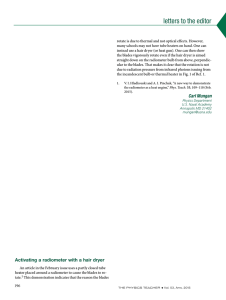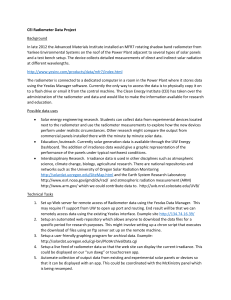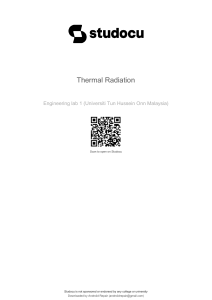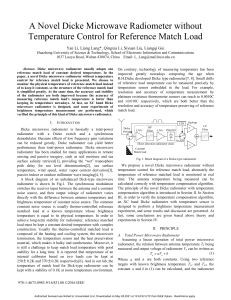The RAVAN CubeSat Mission: Progress toward a new measurement... outgoing radiation William H. Swartz
advertisement
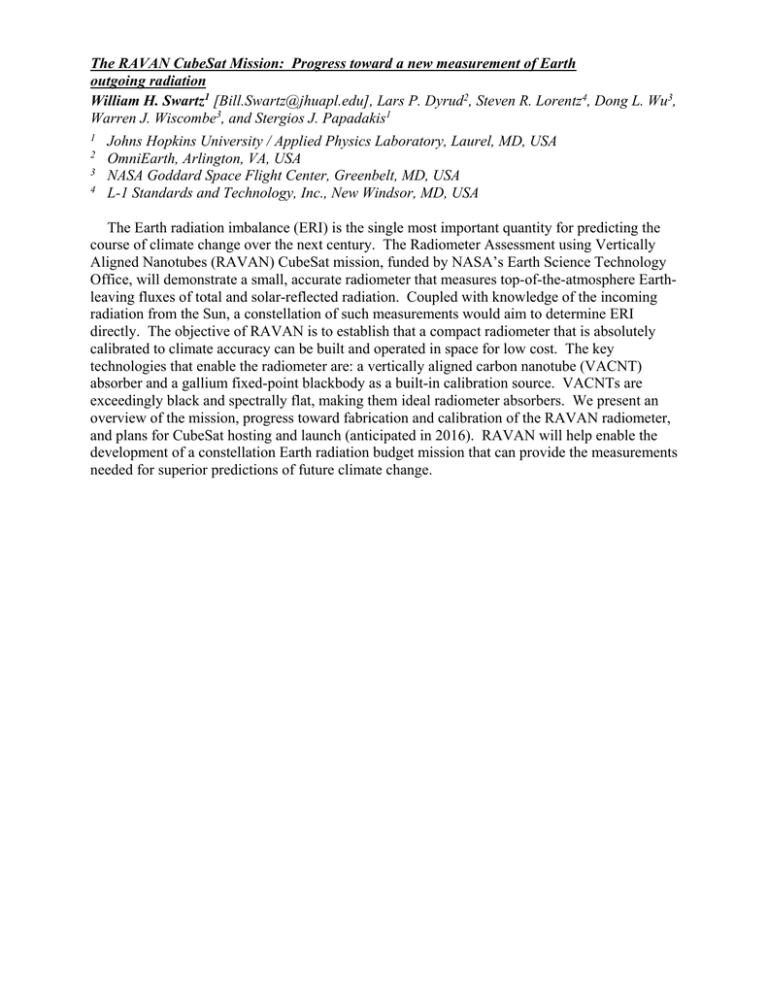
The RAVAN CubeSat Mission: Progress toward a new measurement of Earth outgoing radiation William H. Swartz1 [Bill.Swartz@jhuapl.edu], Lars P. Dyrud2, Steven R. Lorentz4, Dong L. Wu3, Warren J. Wiscombe3, and Stergios J. Papadakis1 1 2 3 4 Johns Hopkins University / Applied Physics Laboratory, Laurel, MD, USA OmniEarth, Arlington, VA, USA NASA Goddard Space Flight Center, Greenbelt, MD, USA L-1 Standards and Technology, Inc., New Windsor, MD, USA The Earth radiation imbalance (ERI) is the single most important quantity for predicting the course of climate change over the next century. The Radiometer Assessment using Vertically Aligned Nanotubes (RAVAN) CubeSat mission, funded by NASA’s Earth Science Technology Office, will demonstrate a small, accurate radiometer that measures top-of-the-atmosphere Earthleaving fluxes of total and solar-reflected radiation. Coupled with knowledge of the incoming radiation from the Sun, a constellation of such measurements would aim to determine ERI directly. The objective of RAVAN is to establish that a compact radiometer that is absolutely calibrated to climate accuracy can be built and operated in space for low cost. The key technologies that enable the radiometer are: a vertically aligned carbon nanotube (VACNT) absorber and a gallium fixed-point blackbody as a built-in calibration source. VACNTs are exceedingly black and spectrally flat, making them ideal radiometer absorbers. We present an overview of the mission, progress toward fabrication and calibration of the RAVAN radiometer, and plans for CubeSat hosting and launch (anticipated in 2016). RAVAN will help enable the development of a constellation Earth radiation budget mission that can provide the measurements needed for superior predictions of future climate change.
